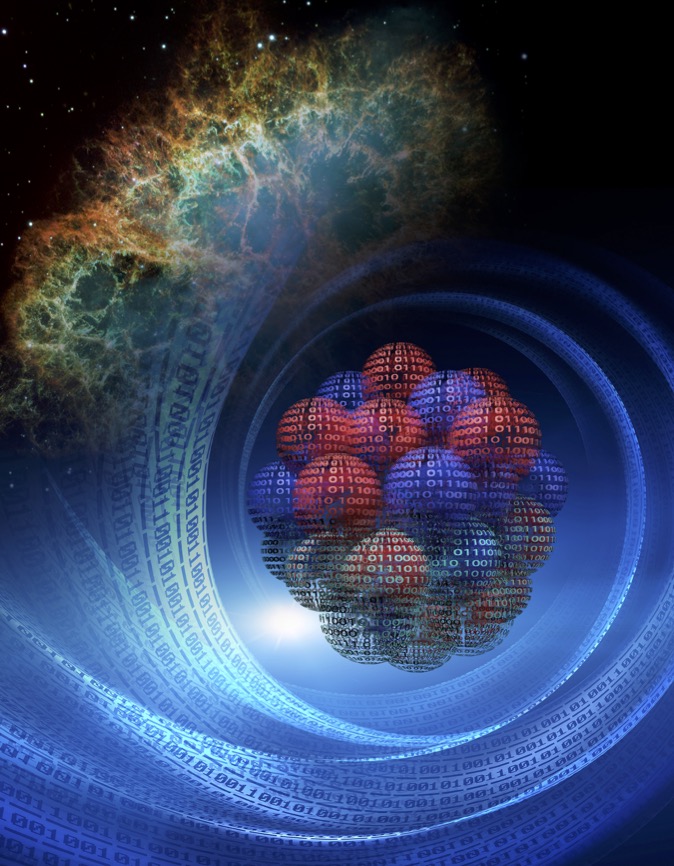The atomic nucleus is a fascinating, strongly-correlated, self-bound, quantum many-body system. The building blocks are protons and neutrons (nucleons) that are themselves composite many-body structures composed of quarks and gluons. In low-energy nuclear physics, the dynamics of the underlying QCD degrees of freedom, i.e., quarks and gluons, are manifested in a very complex force between nucleons. Effective field theory methods promise an order-by-order improvable description of the strong nuclear force that is also consistent with the symmetries of low-energy QCD.

Despite the tremendous complexity of the many-body system and the interactions there is empirical knowledge that surprisingly simple structures and collective phenomena occur in atomic nuclei. In studies of the atomic nucleus one encounters no less than three out of the four fundamental forces in nature: the strong force, the electromagnetic force, and the weak force. In addition, altough one usually considers the nucleons to be the fundamental building blocks of nuclei, there are cases in which the properties of the exchange particles (i.e. mesons) become important.
Our main research interests within ab initio nuclear theory includes:
- Computational many-body methods.
- Realistic nuclear interactions.
- Low-energy effective field theories.
- Theoretical uncertainty quantification.